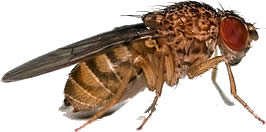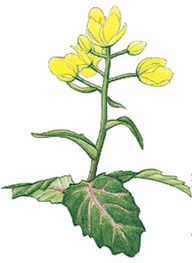Review Genetics – Inheritance

Chapters are from Openstax Biology
Chapter 10: Cell Reproduction
1. Describe the cell cycle, include the stages
2. What are checkpoints?
3. Vocab: chromosomes, chromatin, chromatid, centromere, spindle, cytokinesis
4. Describe the events that occur during mitosis
5. Describe the causes of cancer (mutations)
Chapter 11: Meiosis & Sexual Reproduction
1. Homologous chromosomes, crossing over, and random assortment
2. Describe the events that occur during meiosis
3. Compare final product of meiosis to that of mitosis
4. Describe how the processes of meiosis ensure that each gamete is unique
5. Compare autosomes to sex chromosomes (identify on a karyotype)
6. Review the case notes on the SRY allele and how sex is determined in humans
6. Compare diploid to haploid life cycles
Chapter 12: Mendel's Experiments and Heredity(ch 12)
1. Mendel’s experiments (F1, F2, P generations)
2. Define: gene, allele, chromosome, heritable, character, trait, punnett, dominant, recessive, homozygous, heterozygous, true-breeding, genotype, phenotype
3. Perform monohybrid and dihybrid crosses (9:3:3:1)
4. Compare the particulate theory of inheritance to the blending theory
5. Understand the relationship between alleles and chromosomes
6. Understand the basics of probability (be able to do crosses mathematically)

7. Understand how test crosses are used to determine genotypes of unknowns
8. Describe cases where alleles exhibit incomplete domimance and codiminance
9. Explain how multiple alleles can sometimes control a single trait (blood types)
10. Perform crosses that involve codominance, incomplete dominance, and multiple alleles
11. Describe cases where genes located on the X chromosome control traits
12. Be able to perform crosses that involve X linked genes.
13. Provide examples of lethal alleles and how these genes change the ratios Mendel observed.
14. Explain the laws of inheritance (segregation, independent assortment, dominance)
15. Explain how linked alleles violate the law of indepedent assortment
16. Explain epistasis and perform genetic crosses that involve epistatic alleles (labradors)
17. Describe how multiple genes can control single traits; polygenic inheritance
Investigations in Genetics
18. Perform a chi square analysis on a set of data
19. Discuss how fruit flies are used as model organisms (Investigation: Fruit Fly)
20. Discuss how Wisconsin Fast Plants are model organisms (Investigation: Wisconsin Fast Plants)
*The exam will include a variety of Mendelian genetics problems (Tt x Tx, Pp x pp….. etc)
SAMPLE PROBLEMS:
1. Monohybrid Cross: A plant that is heterozygous for the tall gene is crossed with one that is recessive and short. What are the phenotypes of the offspring and in what proportion?
2. Dihybrid Cross: In plants, round seeds is dominant to wrinkled seeds and tall is dominant to short. Show the cross between two plants that are heterozygous for both traits. What are the phenotypes of the offspring and in what proportion?
b. What if the second parent was recessive for both traits? What phenotypes would you expect in the offspring?
3. Epistatic Cross: In Labradors, the yellow coat color is epistatic. Labs can be black (dominant), brown (recessive) or yellow which is caused by a pair of recessive alleles (ee) A heterozygous black lab (BbEe) is crossed with a yellow lab (Bbee). What proportion of the offspring will be black? _________ Yellow? __________ Brown? __________
4. Codominance: In cattle, coat color can be red or white. If a red cow is crossed with a white cow, the offspring is a mottled red & white – coloration farmers call “roan”. What phenotypes would you get from a cross between a roan and a white cow?
5. Blood types: If one parent has type A blood and another parent has type B blood, what are ALL the possible blood types of the children. You do not know the parents’ genotypes.
6. Sex Linked: In humans, colorblindness is a sex linked, recessive trait. If a woman who is a carrier for colorblindness marries a colorblind man, what are the chances that their children will be colorblind?
7. Linkage Group: In fruit flies, the gene for dumpy wings (recessive) is on the same chromosome as the gene for short antennae. If a heterozygous fly (DdAa) is crossed with one that is recessive for both traits (ddaa) are crossed, what are the phenotypes of the offspring and in what proportion? On the first fly, the dominant genes are located on the SAME chromosome.
